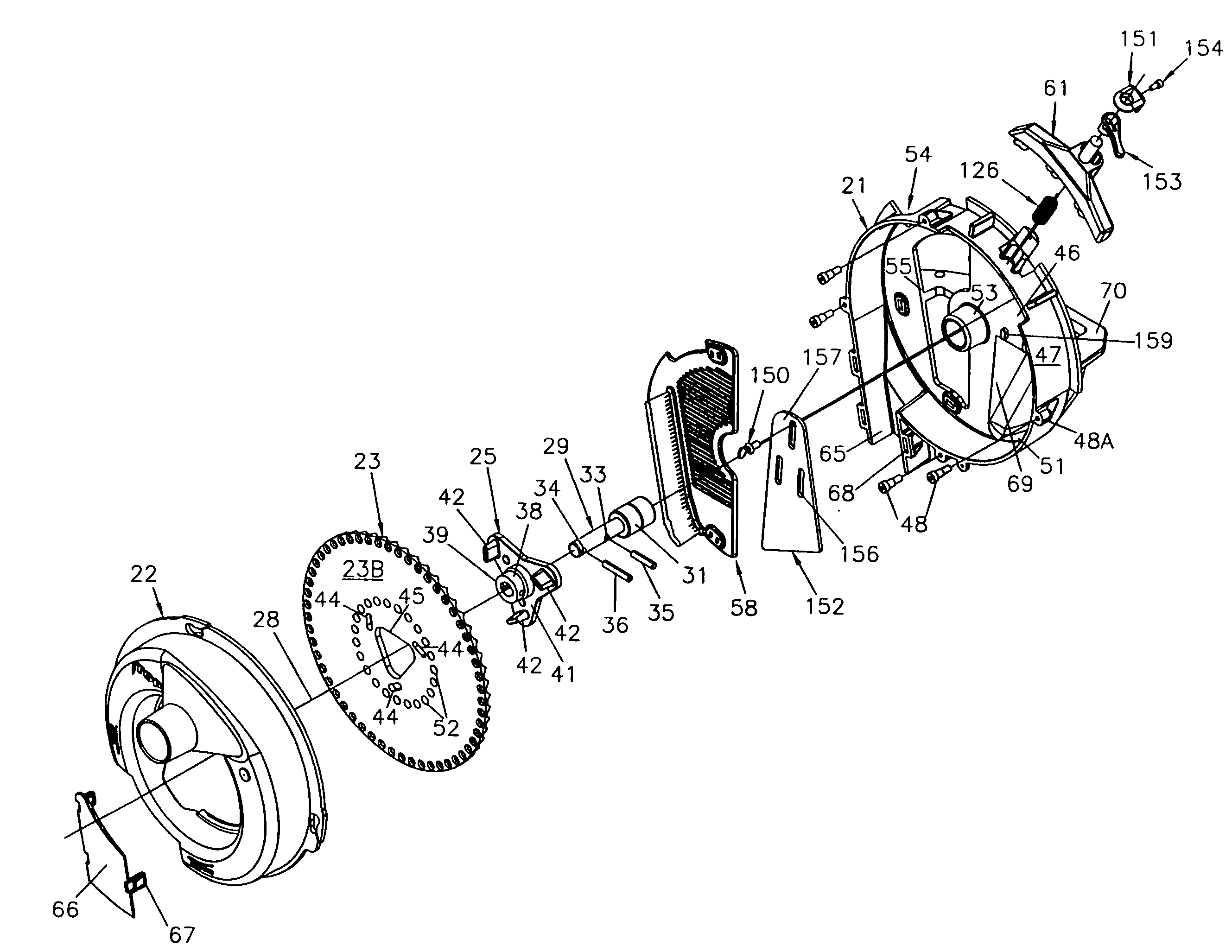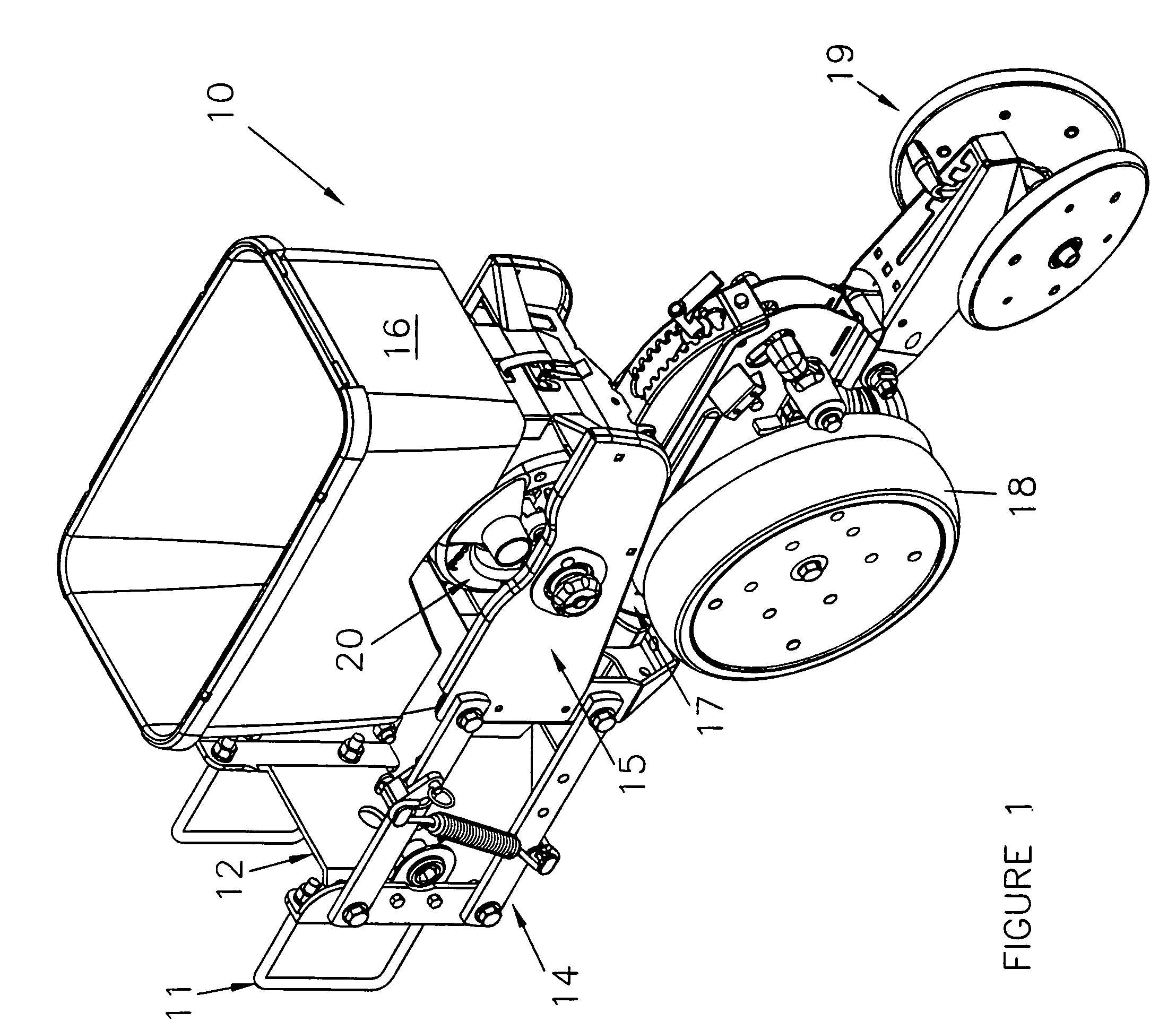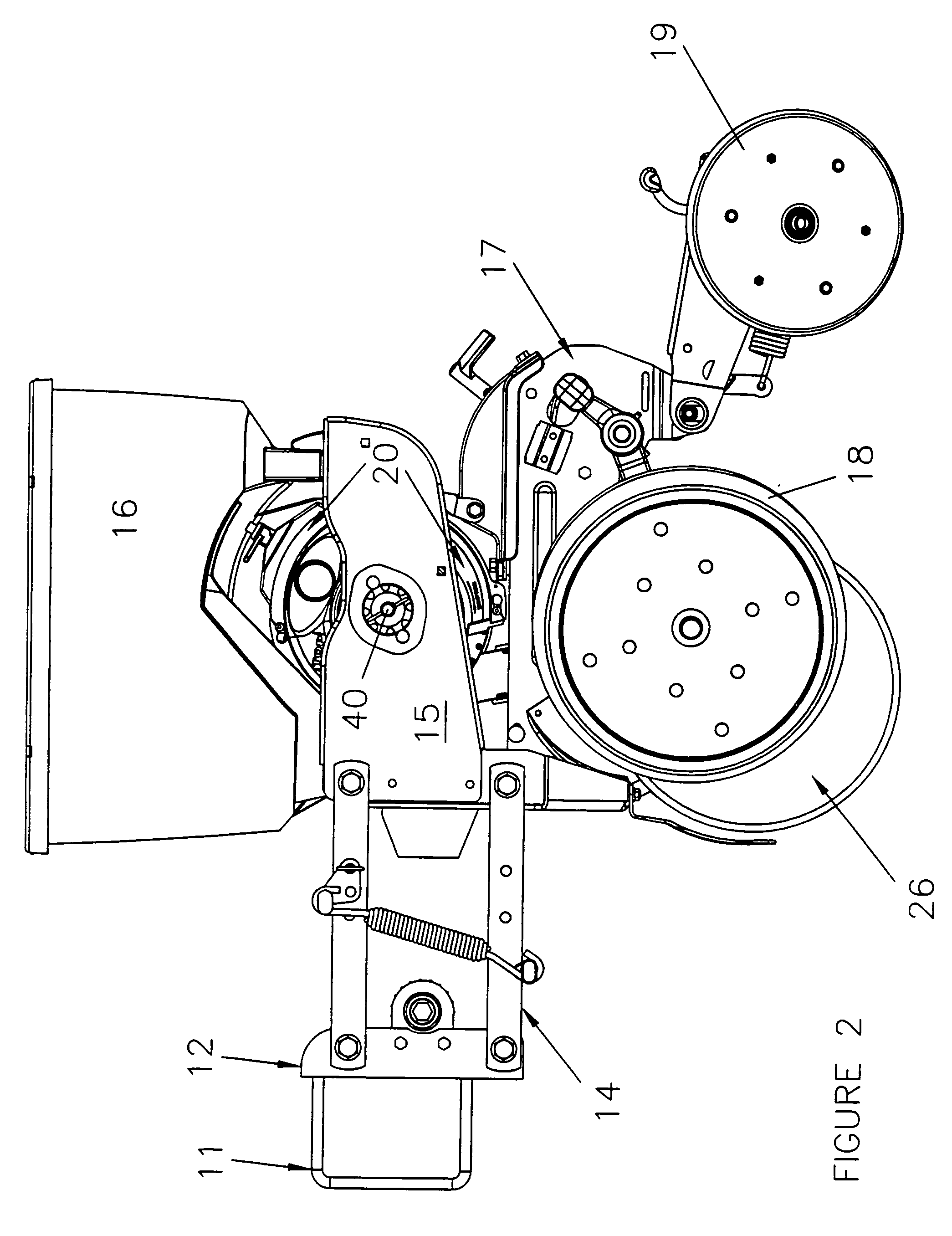Air seed meter
a technology air filter, which is applied in the field of air seed meter improvement, can solve the problems of requiring compensation, increasing the likelihood, and creating a “chimney effect” or “chimney effect” in the discharge chute, so as to reduce the effect of “chimney effect” and increase the cross sectional area
- Summary
- Abstract
- Description
- Claims
- Application Information
AI Technical Summary
Benefits of technology
Problems solved by technology
Method used
Image
Examples
Embodiment Construction
[0050] Referring first to FIG. 1, reference numeral 10 generally designates a planter row unit incorporating the air seed meter of the present invention. Briefly, the row unit 10, aside from of the inventive air seed meter is known in its general aspects to persons skilled in the art. The row unit includes a U-bolt mount generally designated 11 for mounting the row unit to a conventional planter frame or tool bar, as it is sometimes called, which may be a steel tube of 5 by 7 inches (although other sizes are used, as well).
[0051] The mount 11 includes a faceplate generally designated 12 which is used to mount left and right side parallel linkages, each linkage being a four-bar linkage such as the left one seen in FIG. 1 and generally identified by reference numeral 14. The double linkage is sometimes described as having upper parallel links and lower parallel links, and the rear ends of all four parallel links are pivotally mounted to the frame of the row unit generally designated ...
PUM
 Login to View More
Login to View More Abstract
Description
Claims
Application Information
 Login to View More
Login to View More - R&D
- Intellectual Property
- Life Sciences
- Materials
- Tech Scout
- Unparalleled Data Quality
- Higher Quality Content
- 60% Fewer Hallucinations
Browse by: Latest US Patents, China's latest patents, Technical Efficacy Thesaurus, Application Domain, Technology Topic, Popular Technical Reports.
© 2025 PatSnap. All rights reserved.Legal|Privacy policy|Modern Slavery Act Transparency Statement|Sitemap|About US| Contact US: help@patsnap.com



